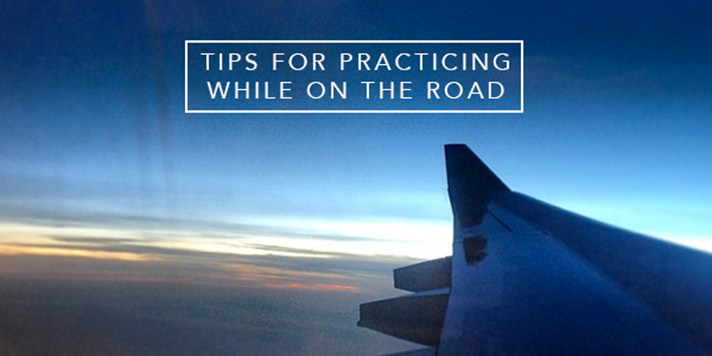I try to practice for at least an hour everyday, but when I’m on the road, it’s hard to squeeze time in for practice. Last year, I completed a project 365 where I committed to practice everyday whether in sickness or in health, at home or on the road.
This resulted in my practicing in some rather strange places such as my car, hotel rooms or wherever else I could manage and so, I’d like to share a few tips with you for finding time to practice while traveling.
1. Bring a music class with you. There are tons of great music classes online on everything from music production to songwriting to improvisation. Even if you can’t bring your instrument along, you can find time to practice other aspects of your music with an online course.
2. Visualization. Read your music without your instrument. Pay attention to the dynamics, the articulation, the accidentals. Go over it in your head.
3. Air guitar. Or saxophone. Or trumpet. Take your visualization practice to the next level by trying to finger along. You might find it more difficult than you think.
4. Bring a smaller instrument along. Sometimes this isn’t ideal, but it’s a great way to work on a double (unless there’s a smaller version of your instrument available). For example, you could bring your soprano sax along rather than your tenor or even flute/clarinet. If you’re a keyboard player, you can bring a small keyboard along with you. As trumpet player you can bring just your mouthpiece to do exercises and warm-ups with. As a guitarist you could bring a mandolin or ukulele or a backpack travel guitar.
5. Your voice. We’re already equipped with an instrument! No need to take an extra one along. Practice ear training by using your voice to sing the music you’re working on or sing along to recordings.
6. Find local jam sessions. If you’re staying at a hotel, the other patrons might not appreciate you practicing (depending on how loud your instrument is), so before you travel, check out local jam sessions in the area. It’s a great way to meet musicians, get some playing time in and explore the local music scene. Check out our jam session directory to get started.
7. Active Listening. Really listen to music. Stick some headphones on, close your eyes and do nothing but listen. Take notice of the structures of the songs, if you can transcribe any parts of the song in your head without your instrument, the melody, etc.
8. Take a break. Sometimes a break away from your instrument and practice can do wonders for your playing.
[template id=”182″]
